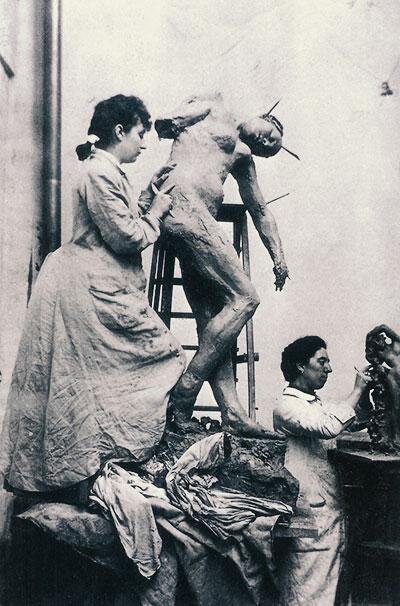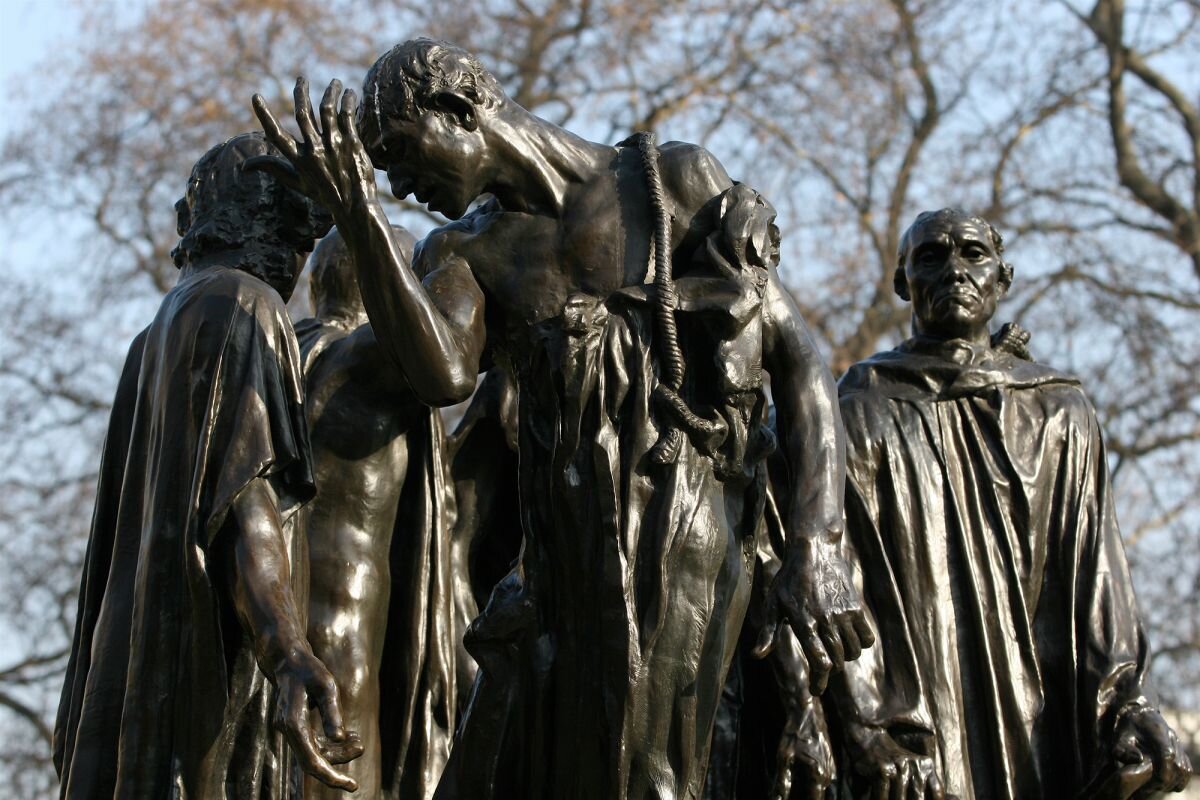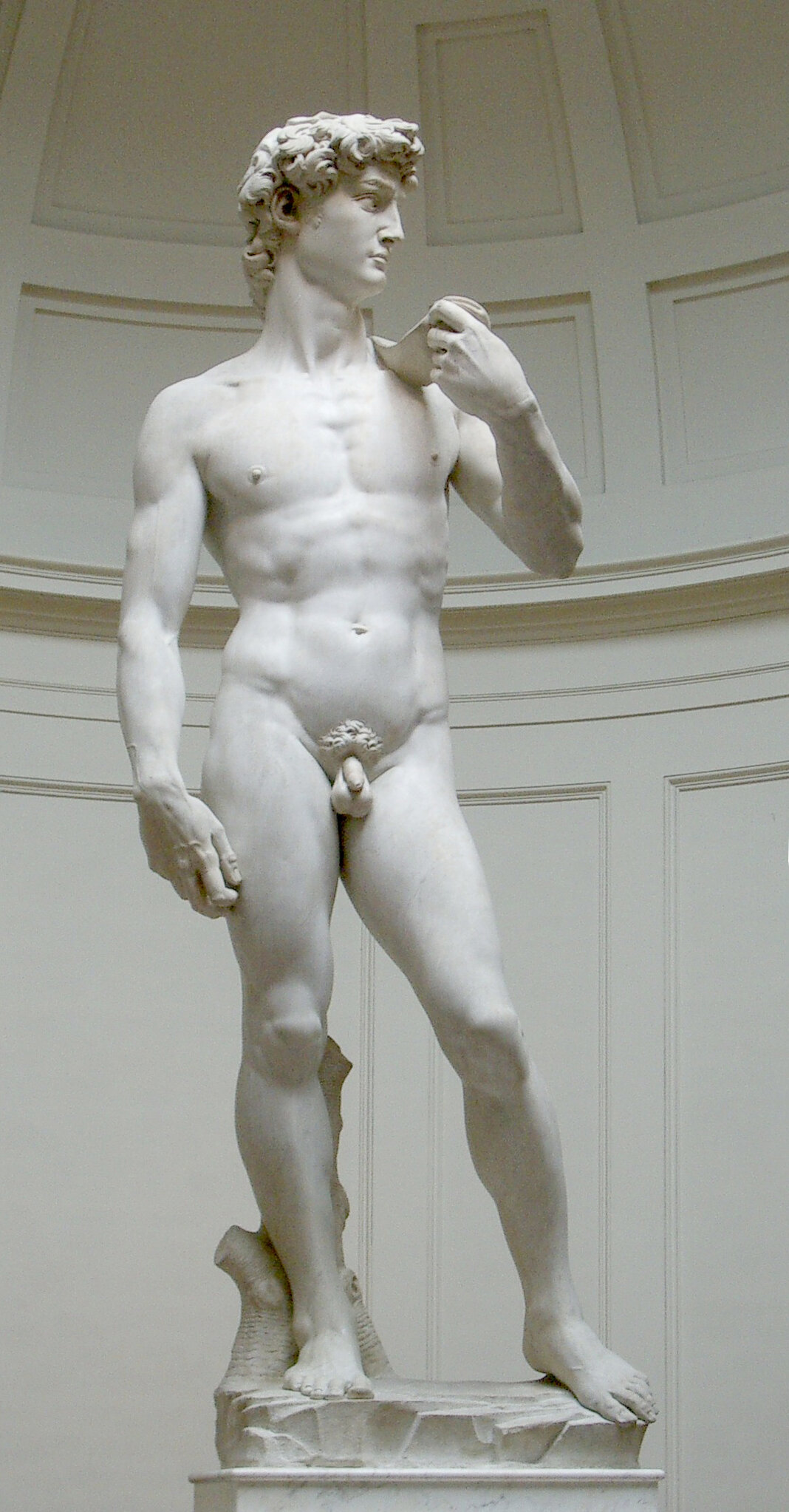The Master of the over-statement
Musée Rodin
Musée Rodin - Paris
Figure 2. Camille Claudel
We are going to talk about the Musée Rodin today. Yes, another museum dedicated to the ego of another male artist. But before we get started, we must address the elephant in the room. That’s right. Camille Claudel. (Figure 2) Who was, as we all know, a talented young woman when she went to work in Rodin’s studio. And as so often happened, happens, will happen, older men have a thing for younger women and young women find powerful men attractive. It is apparently genetically encoded in all of us. Has something to do with preservation of the species and all that. Women want powerful men so that when they have children, they and their children will be protected. Men want young, healthy wombs for their offspring. Basic, like I said. So, Camille had a thing for Rodin and he had a thing for her. And as these things go, it was pretty productive, if not reproductive and she went from pupil to assistant to colleague. But this thing she had for Rodin was pretty intense and she wanted him to leave his companion, his Rose. And maybe sometimes he promised her he would, but men are like that, right ? They’ll tell you what you want to hear and then they’ll do what they want to do. So he didn’t leave Rose, wouldn’t leave Rose. And maybe Camille would have gotten over it, eventually, maybe the passion, the pain, would have continued to inspire her work. (Figure 3)
So then you ask, how is it that Camille Claudel spent the last 30 years of her life in a mental institution. The real culprits in the tragedy that was Camille Claudel’s life, were her mother and her brother. Her father had encouraged Camille to pursue her passion, But when he died, she was at the mercy of those two, a mother who didn’t approve of her unladylike daughter and a brother who had her committed to a mental institution at the age of 49, who visited her 7 times during those 30 years, who refused to let her leave the mental institution despite entreaties from the doctors and staff, assuring him that she was not mad. And by the way, this brother has a ‘Place' named for him right off the Luxembourg Gardens, go figure. So, we do not have to worry about our bona fides being challenged by the well meaning feminists amongst us asking how we dare consider the life and career of a man who caused a woman so much anguish. I tell those people to focus their animus on the right person, her brother, Paul Claudel. Okay that’s settled.
Figure 4. Auguste Rodin
Rodin. Auguste Rodin. (Figure 4) Today the towering figure of European 19th/20th century sculpture. It wasn’t always so. He struggled for a long time and he couldn’t just keep sculpting like a painter can keep painting. Because working on the scale he worked and the materials he worked with, he needed big commissions, public commissions, which he sought and which he sometimes got. And even when he was awarded a commission, it was never certain that the client was going to be happy with what he created. His vision didn’t always match theirs. You know from my review of Brancusi’s atelier that Rodin’s ‘Kiss’ doesn’t do it for me, leaves me cold, cold as marble. Other works of his I really like, The Burghers of Calais for example, (to which we’ll return in a moment) or the Walking Man, for another example (reminds me of Giacometti, Figure 5) or the Man with a Broken Nose,(Figure 6) for a third (reminds me of a Hellenistic statue, The Boxer, Figure 7). I like the first because it is filled with action and reaction, physical manifestation of internal emotion. Like the Apostles in Leonardo’s Last Supper each of whom reacts in a different way to Christ’s declaration that one of them will betray Him. (Figure 8) The Burghers of Calais, six prominent men depicted preparing for their death at the hands of Edward III during the 100 Years War. (Figure 9) We all know that the Last Supper didn’t have a happy ending (if it had, maybe we wouldn’t have Christianity). But the Burghers of Calais did have a happy ending. These men were all saved at the end. The city of Calais wanted a monumental, triumphant statue of the town’s most prominent Burgher. That wasn’t interesting to Rodin. Instead he chose a different moment in the drama and gave the city of Calais a sculptural group of six men, each responding in individual ways to their impending fate - anguish, despair, resolve, stoic acceptance. (Figure 10) The city of Calais may not have been happy but it was a bold move on Rodin’s part. It is an exciting sculptural piece, one that you can walk around and examine from many angles.
Figure 6. Rodin, Man with the Broken Nose, 1864
Figure 7. The Boxer, 50 BCE
Figure 8. Leonardo, The Last Supper, Milan, 1495
Figure 9. Rodin, Burghers of Calais, Garden, Rodin Museum, 1889
Figure 10. Rodin, Burghers of Calais, Garden, Rodin Museum, detail. 1889
You are probably thinking, as I am, of Italian Renaissance depictions of the Old Testament figure, David. (Figure 11) Donatello’s Early Renaissance depiction shows a young boy with the head of Goliath between his legs. The drama is over, the moment is triumphant. Michelangelo’s High Renaissance David is a young man summoning his mental courage to slay the giant. He is still, he is focused. And then there is Bernini, the Baroque sculptor whose David (a self portrait) is all action. His body is tightly wound, preparing physically for the task at hand, hurling the stone from his slingshot, like the Greek Discobolus statue, (Figure 12) ready to unwind and fling the discus. After, Before, Mental, Physical. Same story, different moments depicted - a function of person, place, time, sometimes, not always, commission.
Figure 11. David: Donatello (left), Michelangelo (center), Bernini (right)
Figure 12. Myron, Discobolus, 450 BCE
Of course there is The Thinker, too, I don’t think anybody thinks about The Thinker anymore, Robin Williams was probably the last person who did. (Figure 13) Because The Thinker is now so much a part of our collective conscience / sub conscience that, like Michelangelo’s David, he is an icon. A proliferating icon to be completely honest. What do I mean by that ? Well, where have you seen The Thinker ? I have seen one in Philadelphia, another in San Francisco, a third at Stanford University, a fourth at the Met and of course the one in Paris at the Rodin Museum which I promise I will turn to shortly since this is a review of the Rodin Museum. During his lifetime, Rodin made at least 10 castings of The Thinker. When he died in 1917, he left recasting rights to France. That was nice of him. Since then, the number of Thinkers has at least doubled, in fact we are not exactly sure how many Thinkers there are. So how do we define originality with so many reproductions at hand? Can or should any iteration after the first be considered an original or just a copy. Should copies made during an artist’s lifetime be considered more ‘original’ than copies made after his death. After all, when still alive, a sculptor can fix or smooth or whatever. Mme Giacometti was vigilant about exposing unauthorized copies of her husband’s work so they wouldn’t be passed off as originals. And there is a big difference in price for glass pieces blown by master glass blower Dale Chihuly and those done under his direction, but not by him. Original, a difficult word to define in some mediums.
Figure 13. Robin Williams & The Thinker, Legion of Honor Museum, San Francisco
The Thinker is the epitome of repose. Rodin was equally fascinated by movement and especially contortion. When my dear friend Bobby Stepp was here a couple years ago, we went to the Rodin Museum to see a temporary exhibition, ‘Rodin and Dance’. Rodin did not make sketches and statuettes and statues of Degas-like ballerinas. Rodin was interested in different forms of dance from all over the world - regional and oriental folk dances, cabaret performances and the work of contemporary dancers like the Americans Isadora Duncan and Loïe Fuller. When the dancers of the Cambodian royal ballet traveled to Paris to perform, he couldn’t get enough. When they left, Rodin wrote, they “took the beauty of the world with them.” In the exhibition I saw with Bobby there were a series of drawings, sketches and statuettes of a gymnast whose poses could be called erotic by some, pornographic by others (yes, I know pornography when I see it !) I tried to be professional as Bobby and I wandered through the exhibition. What to add to the written commentary ? All I could think to say was how difficult it must have been for the model to maintain the contorted positions the sculptor assigned her. (Figure 14)
Figure 14. Rodin. Statuettes of dancers, Rodin Museum
Okay, it is probably time to talk about the Musee Rodin, (see above, Figure 1) which I visited often when my son was young, because of the garden, of course. As he got older and more martial in his interests, I would drop him off at the Musee de l’Armée, just around the corner and then go, in peace, to the Rodin museum. The museum is the Hotel Biron, a gorgeous building which changed hands and purpose several times before becoming the Musée Rodin. Built between 1727 and 1737, for a wealthy financier, his widow sold it to the future Marshal Biron from whom it gets its name. In 1820, the Hotel Biron was sold again, this time to the Society of the Sacred Heart of Jesus. It became a boarding school for girls. A chapel was added. After 85 years, the Society of the Sacred Heart was dissolved, the nuns were evicted and the property was put up for sale. While waiting for a buyer, various artists occupied the building, among them the writer Jean Cocteau, the painter Henri Matisse and the dancer Isadora Duncan. In 1908, Rodin joined them and took four south-facing, ground-floor rooms as his studios. He began placing his works and antiques into the garden. When the French government bought the property in 1911, all of the tenants left, except Rodin. He began negotiating. If he could stay, he told them, if the Hotel Biron became a museum in his honor, he would give the State, “all my works in plaster, marble, bronze and stone, and my drawings, as well as the collection of antiquities.…” As part of the deal, Rodin would reside in the Hotel Biron for the rest of his life. The government agreed, the mansion and gardens became the Musée Rodin. Before the 2012-15 renovations, you could pay a euro, and just wander around the garden, maybe get a drink at the outdoor cafe. Not anymore. But those renovations took the museum to another level entirely. They permitted a complete rethinking of the exhibition space. Now Rodin’s work is shown alongside the work of some of his contemporaries, significantly, the work of Camille Claudel. The new layout highlights Rodin’s creative development by bringing some of his plasters out of storage and into the museum to illustrate the evolution of his work. (Figure 15)
Figure 15. Rodin Museum
The museum has 18 rooms and the collection unfolds both chronologically and thematically. There are fragments of Ancient Greek and Roman sculpture which Rodin bought in job lots from antiques dealers. Rodin also owned paintings by his contemporaries. Some of them are on display, like Edvard Munch’s 1907 painting Rodin’s ‘Thinker’ in Dr Linde’s garden in Lübeck. (Figure 16) My daughter the hand model / interior designer is obsessed with Farrow & Ball paint, so I could happily report to her that the Museum’s grand, wood-paneled reception rooms were painted with Farrow & Ball paint. In fact, the company created a new color, Biron Grey for the museum, to highlight the sculptures. (Figure 17) The chapel has also been renovated and the garden has been, too. (Figure 18) You can wander through the garden and bump into the Burghers of Calais, The Thinker, the Gates of Hell, and much much more. It really is a grand and glorious place. Don’t rush your visit, enjoy it slowly, savor it. Opens again in early July.
Copyright © 2020 Beverly Held, Ph.D. All rights reserved
Figure 16. Edvard Munch, Rodin’s ‘Thinker’ in Dr Linde’s garden in Lübeck, 1907
Figure 17. Rodin Museum
Figure 18. Rodin Museum Garden with The Thinker






















